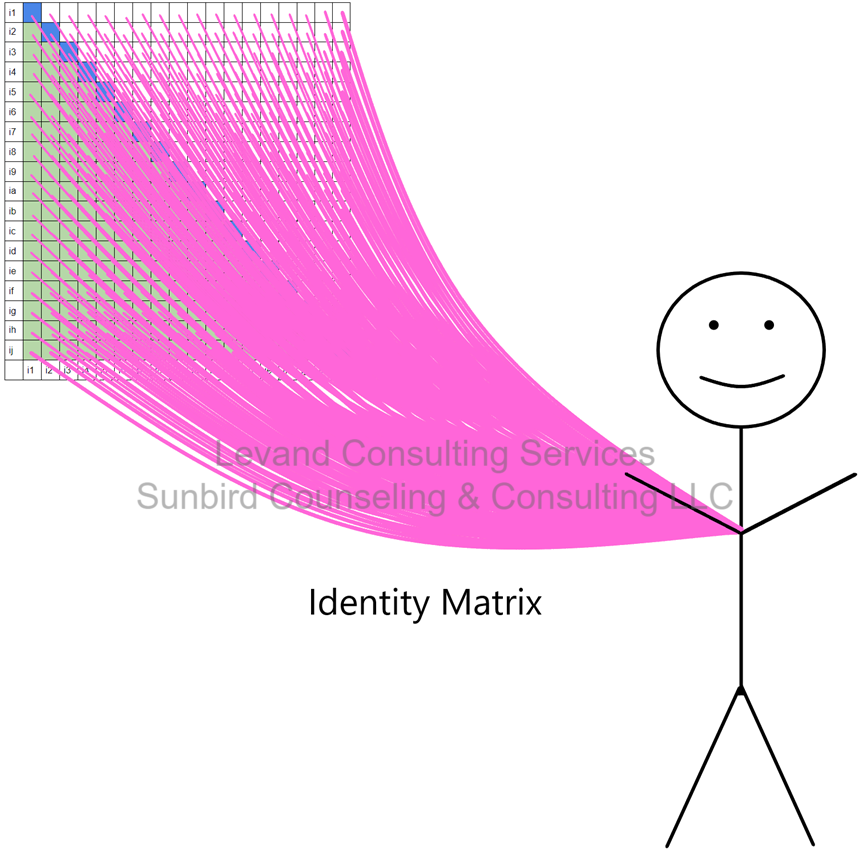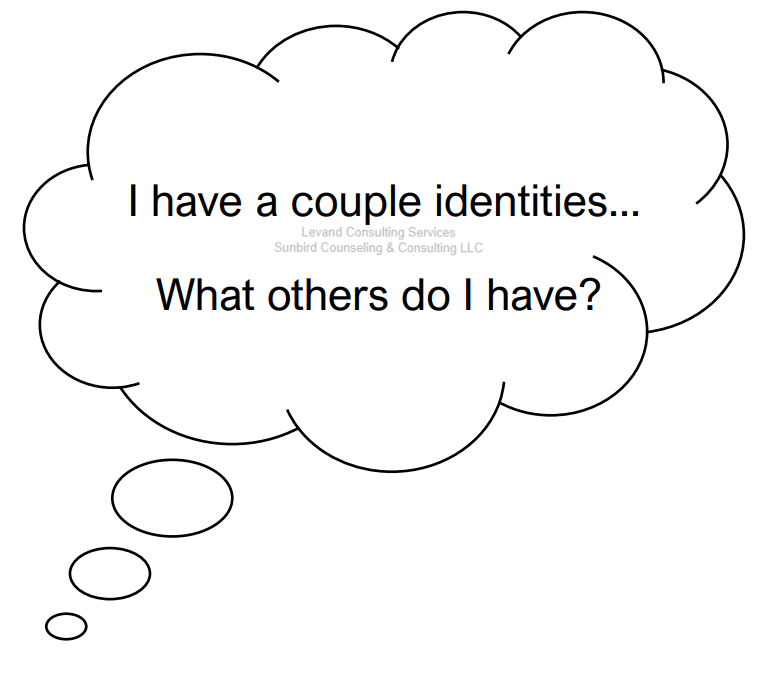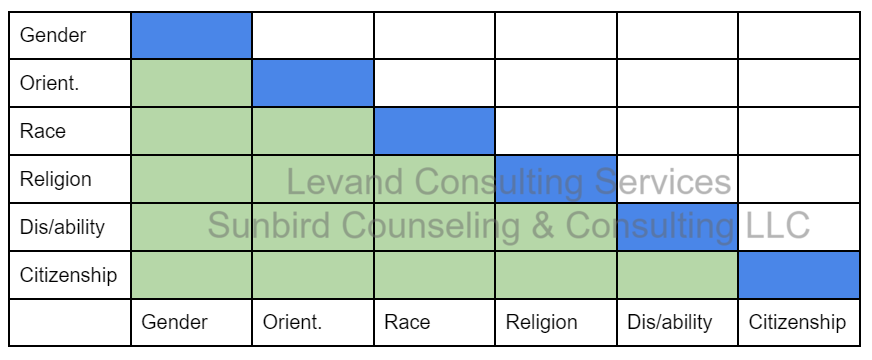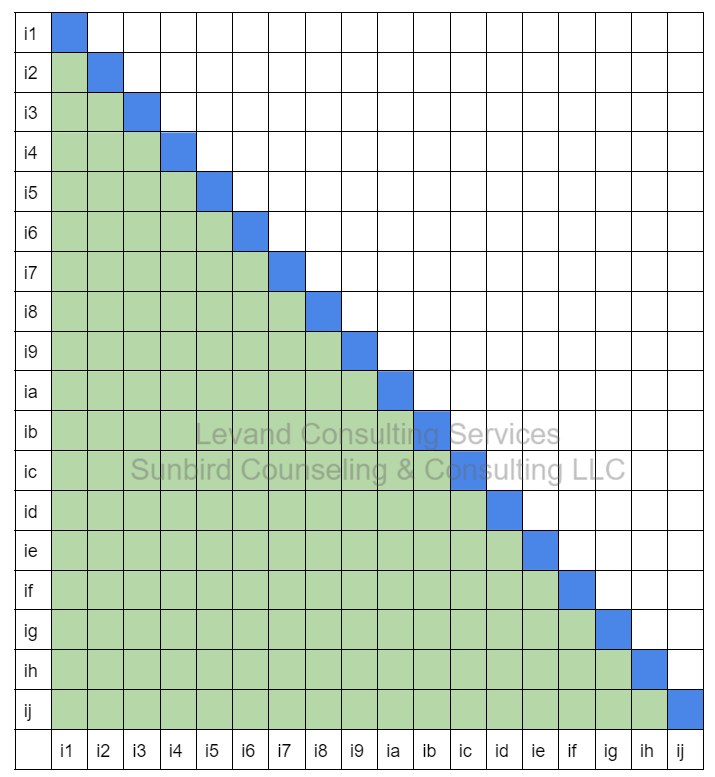Understanding the Many Identities that Make Up One You

Our identities make up who we are and how we interact with others in society. Different theorists have named how a single person can have identities that overlap, creating our unique experience in and of the world. We also see that naming and reflecting on our identities is important for how we learn and grow. Identity Development Theorists Charmaine Wijeyesinghe and Bailey Jackson remind us that development in one area of identity cannot be viewed as separate from the development of our other social identities [1].
Kimberlé Crenshaw–American lawyer, critical race theorist, and civil rights advocate–named the notion that people have identities that intersect as intersectionality. In her initial work, Crenshaw noted that the experience of being a woman and the experience of being Black led to a particular type of discrimination in the workplace as a result of both racism and sexism, rather than just one or the other [2].
Along with our intersecting identities come layers of power and privilege. Crenshaw noted this with racism and sexism in relation to Black women. Law professor Darren Hutchison examines this concept with regard to Black men, noting that as a theory, intersectionality makes some assumptions that disadvantage Black men in the conversation of overlapping identities and posits a theory of multidimensionality [3]. This is another way of looking at people as having many dimensions or identities that can have a very specific relationship to society.
What these Black scholars, identity development, and critical race theorists have observed is that each of us are individual people with a series of identities that locate us in society in a particular way, especially with regard to power, privilege, and discrimination. In other words, our identities come together in a unique way to create each of us, and we have different relationships to power based on those identities.
In educational settings, people often discuss these intersecting identities to bring awareness to our privilege and oppression. Take, for example, social justice consultant and writer Anna Czarnik-Neimeyer’s Identity Grid Activity [4]. In this activity, learners examine 11-12 different identities they hold and get to reflect on various aspects like their levels of awareness, values, knowledge, privilege, and oppression regarding these identities. Learners are instructed to examine this group of identities in the following ways:
- Parts of my identity that I’m least/most aware of
- Parts of my identity that were most emphasized by my family growing up
- Parts of my identity that I wish I knew more about
- Parts of my identity that I feel are difficult to discuss with those who identify differently
- Parts of my identity that give me the most privilege
- Parts of my identity that make me feel discriminated against
This reflection on our identities is an excellent way to consider our feelings and values associated with various parts of our identities. In the Identity Grid activity above, Czarnik-Neimeyer added a box with ‘Any Other Identity’ for learners to fill in more identities. We think this is a particularly important exercise–one that people can fill in a box about themselves and can ask friends for more ideas, since there are times we don’t know everything about ourselves (to learn more about how others can help us understand more about ourselves, see the concept of the Johari Window [5]). The Identity Matrix activity helps us visualize and process similar aspects about the intersections of each of our identities.

What is the Identity Matrix?
In self-discovery and learning, it is important to understand the diversity of identities we each hold and how that impacts ourselves and others around us. The Identity Matrix is a way of visualizing and reflecting on our own identity experiences–their many dimensions and where they intersect. It is a model of identity intersection, dimension, and reflection that helps us locate our own experience of power, privilege, pain, joy, oppression, and opportunity in relation to our identities.
Doing the Identity Matrix Activity
A more detailed and guided activity can be found in the Identity Matrix Activity Workbook at the end of this introduction. Below is an overview to give you an idea of how the activity works.
To help us look at our identities, let’s start with a number of fairly obvious and often discussed identity categories–gender, orientation, race, religion, dis/ability, and citizenship. List each identity category along the side of a grid, using those same identities along the bottom of the grid. This matrix would look something like this:

Image description: a 6×6 identity matrix with the categories of gender, orientation, race, religion, dis/ability, and citizenship.
In this matrix, the BLUE cells would be a singular identity–in which you examine ONLY that category. This is good to do sometimes, but can also make us forget it is only part of the matrix of who we are. Sometimes we NEED to focus on one aspect more than others because we need specialized attention or development there–especially if we are injured in that part of our identity. An example of examining one of these blue cells might be reflecting on one’s experience of race and what that means for our power and privilege. Reflecting deeply about your experience as a person of that racial identity, how does it feel? How is it similar or different from others you know with that same racial experience? And is there some more attention you can give to developing and cultivating an understanding of your racial identity?
–
The next step is looking at how those identities exist in tandem with your other identities. The intersections, identified here by the GREEN cells, will help us focus on our experiences as both of those identities (e.g., being Black AND a woman, being gay AND a Christian, being disabled AND an immigrant). Sometimes, it might be harder or easier to consider each of these without other identities. The point of this part of the activity is to look at how both of these identities influence your experience of life as this kind of person. Other people have ideas and stereotypes about people with these two identities. How do those stereotypes fit or not with your experience? Does that give you power or privilege in certain social settings? Which? Does it disadvantage you in some ways? Which? Reflecting on the cultural perception of identities we hold and our experience of these can help us better understand societal messages and how others interact with us [6].
–
After thinking about all of the GREEN cells, consider the opposite side of the matrix in the WHITE cells (e.g., religion and gender, then gender and religion–a Hindu woman, and a woman who is Hindu), does it matter to you which one comes first? Why or why not?
Filling out the matrix, even with these few categories, can give us a lot to think about. This activity can be as big as you want it to be, filling in identity categories that are important to you or your communities. The possibilities of the size of your Identity Matrix is endless:

Image description: an 18×18 identity matrix with unnamed categories.
Sometimes, it may feel difficult to think of one intersection without bringing a third identity into the mix. If someone might examine their identities as an able-bodied atheist, they may struggle discussing themselves without adding their gender or race into the intersection. If this happens, consider why this would be the case. Try substituting a different label to see if different thoughts arise (e.g., might someone who is an atheist with cerebral palsy have a different experience? What might it look like?) What have I not considered at this intersection before that might make my experience different from others?
Of course, this is the entire point–while we have each of these identities (blue cells), and each of these intersections (green cells), we are also ALL of these intersections together. We may have different autonomy or control over how they are disclosed or what we do with these identities, but we are unique people as a sum of these intersections (and more!). We each sit uniquely at the intersection of ALL OF THESE INTERSECTIONS.

An activity like this could take an hour, a couple hours, or you could keep returning to it over a series of days as a self-reflective practice. What can you learn about each of these identities that you embody? How does society interact with people who hold any combination of these identities? In which do I feel the most power or pride? In which do I feel the most pain or discrimination?
In learning more about yourself, consider coming up with a statement of intention about how you will operate around some of your identities or intersections that are most important to you.
Remember that our identities matter, and we make up not just one identity, and not just one intersection, but many!
Exploring Guided Activities
For doing this process with a class check out the Identity Matrix Group Activity Lesson Guide.
For a more guided and expansive individual process, check out the Identity Matrix Activity Workbook.
By Mark A. Levand, Ph.D. & Mina L. Beveney, Ph.D., LCSW last revised 10/2022
Designed in collaboration with Sunbird Counseling & Consulting LLC.
References
[1] Wijeyesinghe, C. L., & Jackson III, B. W. (Eds.). (2012). New perspectives on racial identity development: Integrating emerging frameworks (2nd ed.). New York University Press. P. 3
[2] Crenshaw, K. W. (1989). Demarginalizing the intersection of race and sex: A black feminist critique of antidiscrimination doctrine, feminist theory and antiracist politics. University of Chicago Legal Forum, 1989, 139-167.
[3] See Hutchinson, D. L. (2001). Identity crisis: “Intersectionality,” “multidimensionality,” and the development of an adequate theory of subordination. Michigan Journal of Race & Law, 6, 285-317. http://scholarship.law.ufl.edu/facultypub/387. And for more of a discussion about this in comparison with intersectionality, see Mutua, A. D. (2013). Multidimensionality is to masculinities what intersectionality is to feminism. Nevada Law Journal, 13(2), 341-367. https://scholars.law.unlv.edu/nlj/vol13/iss2/4.
[4] Czarnik-Neimeyer, A. (2017). Identity grid activity. BridgebuilderConsulting.com.
[5] Luft, J., & Ingham, H. (1955). The Johari window: A graphic model of interpersonal awareness. Proceedings of the western training laboratory in group development, Los Angeles, CA.
[6] For an expansion of this activity, consider replacing one of the identities, imagining having the experience of someone with that identity. For example, if you have ‘gay cisgender man,’ consider changing the orientation to ‘bisexual.’ How might that change someone’s experience? Might you experience more or less privilege in different contexts? What about types of discrimination? Entertain this imaginative exercise as a way to explore what it would be like if one of your identities were different. Consider expanding this activity by talking with/reading about people of identities that are not your own to gain a broader perspective.
